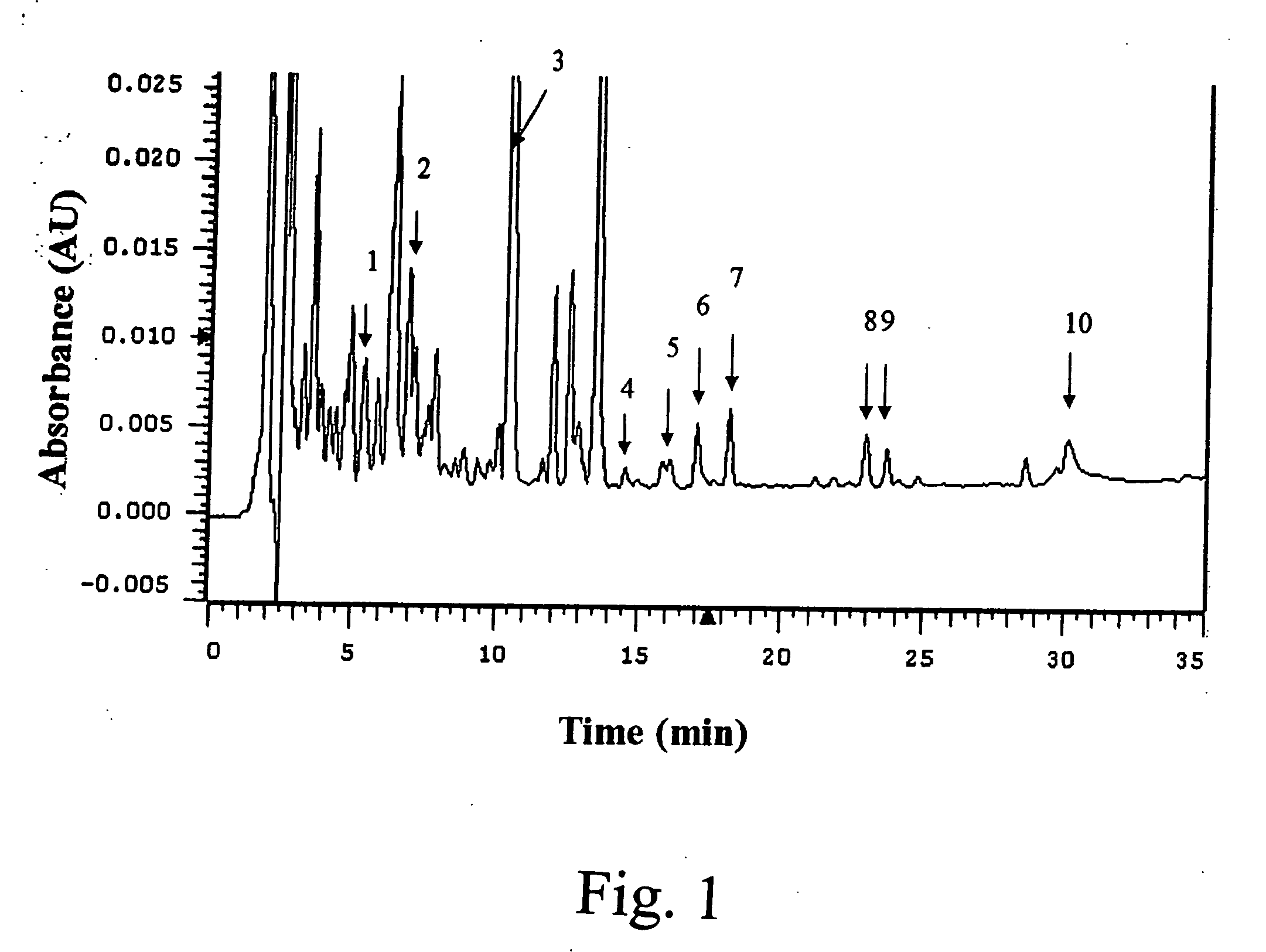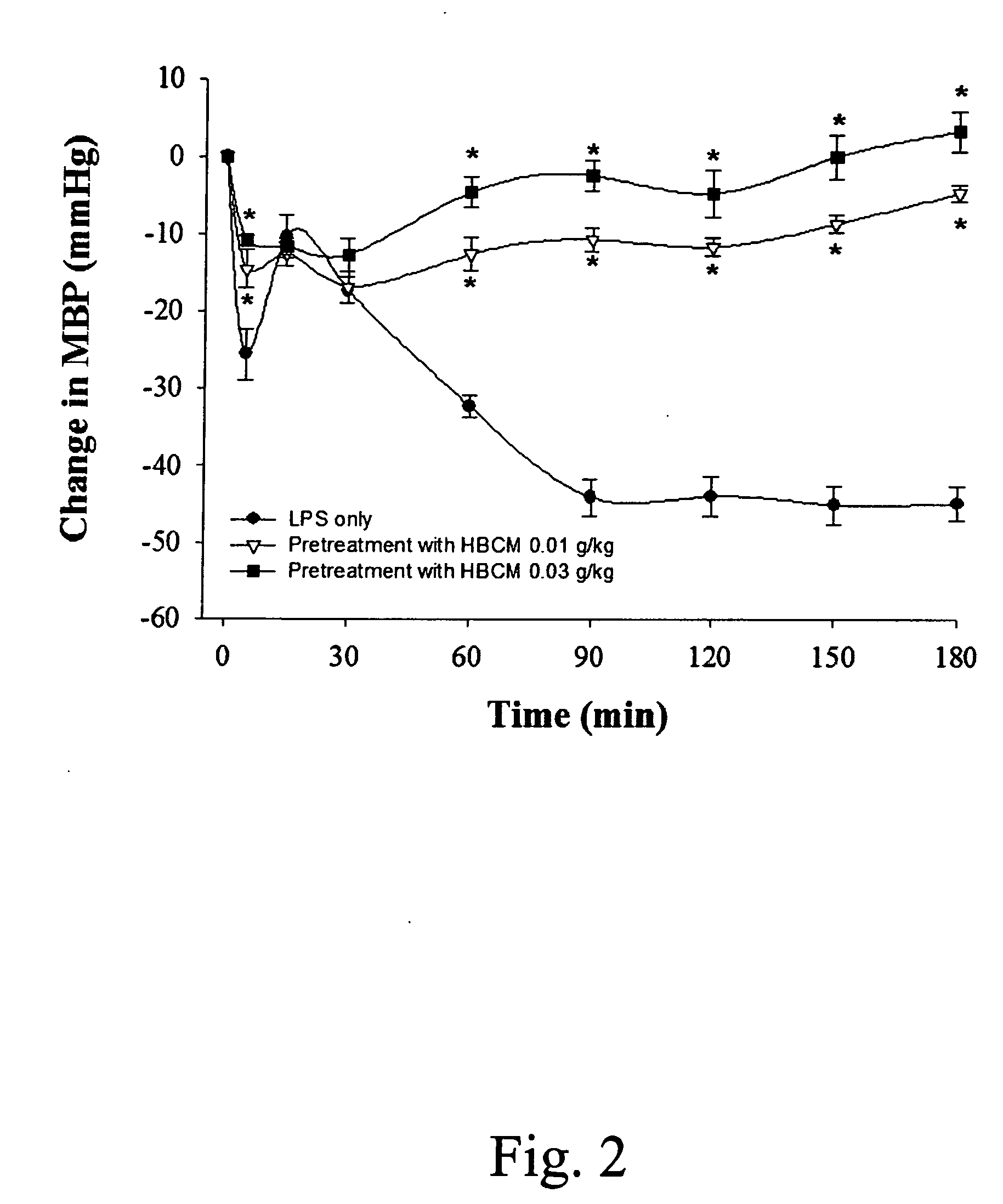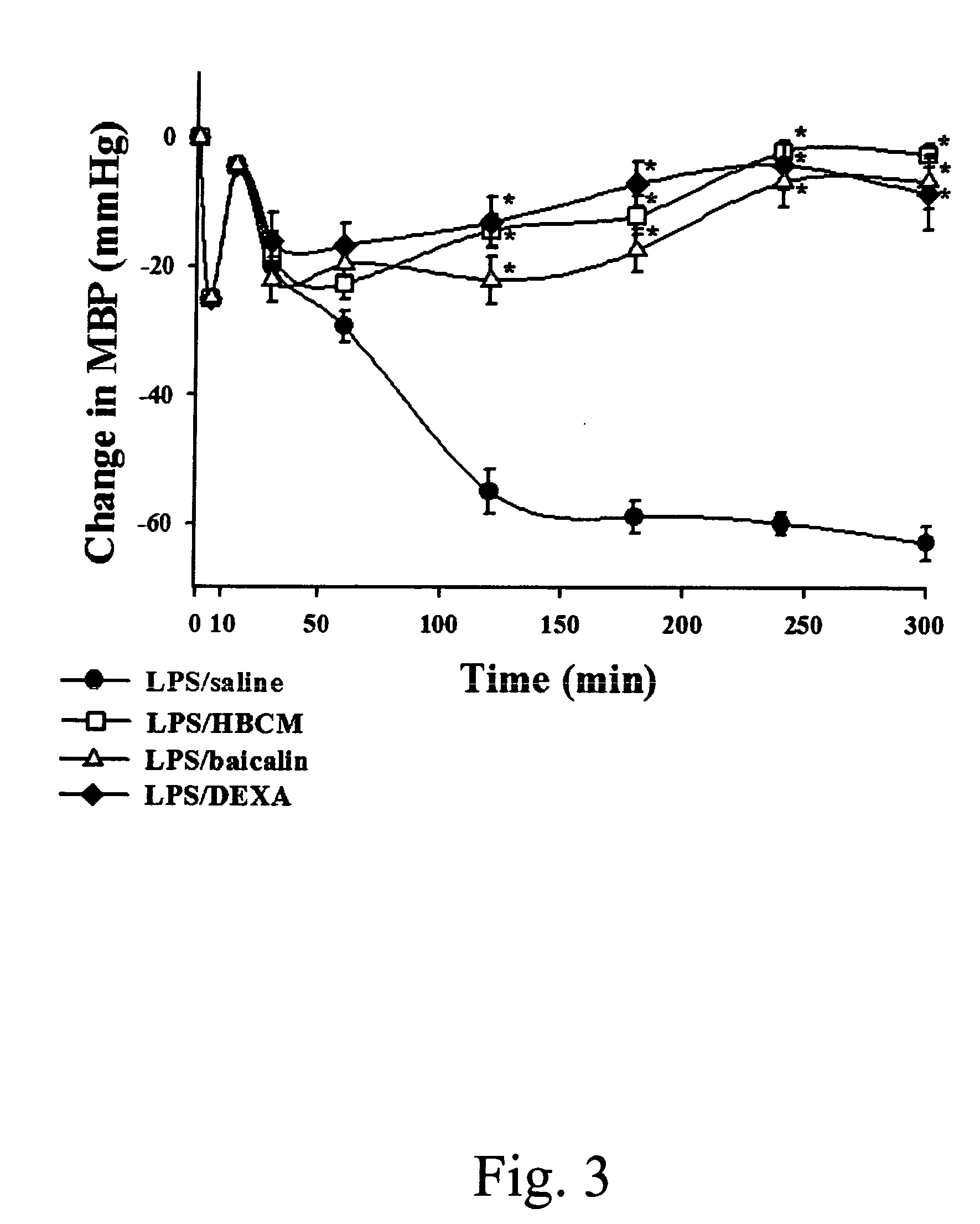Chinese herbal composition for treating diseases
a technology for treating diseases and herbal compositions, applied in the field of chinese herbal compositions for treating diseases, can solve the problems of severe sepsis, loss of function, irreversible damage to the patient's organs,
- Summary
- Abstract
- Description
- Claims
- Application Information
AI Technical Summary
Benefits of technology
Problems solved by technology
Method used
Image
Examples
experiment 1
[0042] Inhibition of LPS-Induced Arterial Hypotension
[0043] A single injection of LPS (10 mg / kg, i.v.) leads to a biphasic arterial hypotension: an initial and transient decrease in arterial mean blood pressure (about 15 min), followed by a delayed and prolonged hypotension. Rats with normal blood pressure are anesthetized by pentobarbital, and then injected HBCM (0.01 and 0.03 g / kg, i.v.). After 30 minutes, LPS is administrated (10 mg / kg, i.v.). The changes of blood pressure are recorded at 1, 3 and 5 hours after LPS injection. The result is shown in FIG. 2, which demonstrates a dosage-depended increase of heart-beating rates and a prolonged increase of blood pressure.
experiment 2
[0044] Attenuation of LPS-Induced Arterial Hypotension
[0045] A single injection of LPS (10 mg / kg, i.v.) leads to a biphasic arterial hypotension: an initial and transient decrease in arterial mean blood pressure (about 10 min), followed by a delayed and prolonged hypotension. The HBCM (75 mg / kg, i.v.), baicalin (1.5 mg / kg, i.v.) and DEXA (0.5 mg / kg, i.v.) are administrated 10 min after LPS administration. The used dose of baicalin is according to the content of baicalin in HBCM by the HPLC method. Separate groups are used for acute survival study (n=10 each), lung tissue sampling (n=10 each), and blood sampling (n=10 each). The animals supplied with pulmonary tissues or blood samples are sacrificed under anesthesia. The result shows that the post-treatment with HBCM, baicalin, and DEXA significantly attenuates LPS-induced prolonged arterial hypotension, as shown in FIG. 3.
experiment 3
[0046] Inhibition of LPS-Induced Plasma Cytokines Formation
[0047] After LPS (10 mg / kg, i.v.) administration, plasma levels of IL-1β, IL-6, IFN-γ and TNF-α respectively increase in a time-dependent manner. However, pretreatment with HBCM (0.03 g / kg, i.v.) significantly inhibits IL-1β production in the experimental groups treated with LPS for 3 hours. In Table 1, it also illustrates that HBCM (0.03 g / kg, i.v.) significantly inhibits IL-6 production in the experimental groups treated with LPS for 3 and 5 hours. The HBCM (0.01 and 0.03 g / kg, i.v.) also decreases the rise in IFN-γ production in the experimental groups treated with LPS for 3 and 5 hours. In addition, HBCM significantly decreases the rise in TNF-α production in the experimental groups treated with LPS for 3 and 5 hours.
PUM
 Login to View More
Login to View More Abstract
Description
Claims
Application Information
 Login to View More
Login to View More - R&D
- Intellectual Property
- Life Sciences
- Materials
- Tech Scout
- Unparalleled Data Quality
- Higher Quality Content
- 60% Fewer Hallucinations
Browse by: Latest US Patents, China's latest patents, Technical Efficacy Thesaurus, Application Domain, Technology Topic, Popular Technical Reports.
© 2025 PatSnap. All rights reserved.Legal|Privacy policy|Modern Slavery Act Transparency Statement|Sitemap|About US| Contact US: help@patsnap.com



